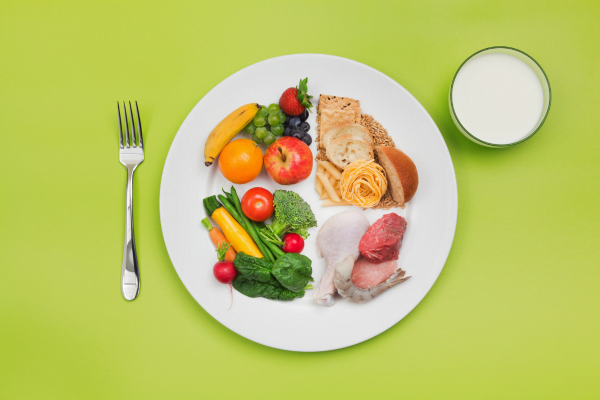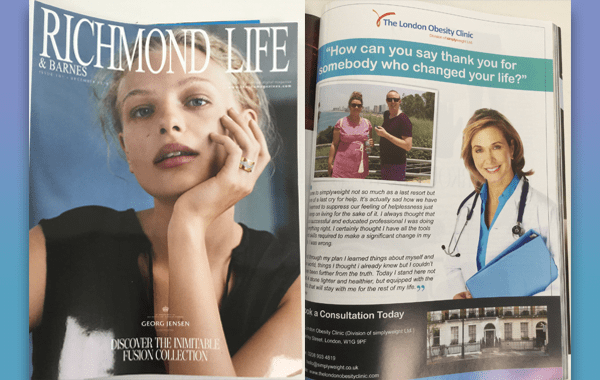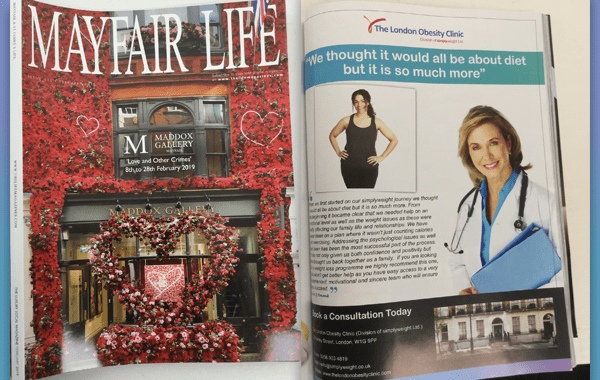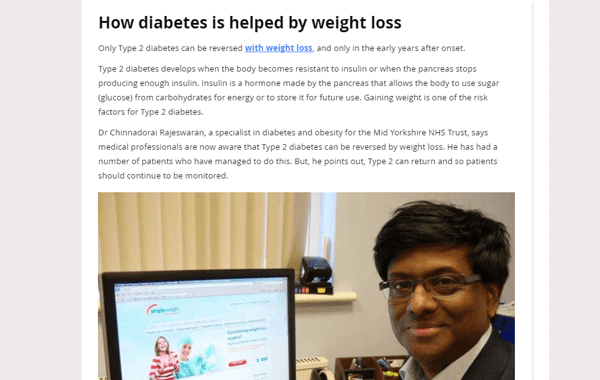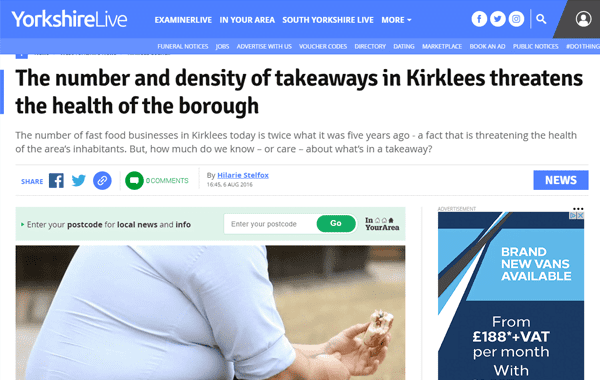Consuming nutritionally balanced food improves overall health and well-being. It provides essential nutrients, energy, vitality, weight management, blood sugar control, digestive health, heart health, bone health, mental well-being, and immune system support. It also improves concentration, productivity, healthy ageing, reduces the risk of chronic diseases, and has a positive impact on mood.
In this blog, we will learn about how to eat a balanced diet and get a brief idea of the my plate technique.
You can also find a few exciting recipes below in the blog which are nutritionally balanced!
Why is it important to eat healthy?
Here is a list of why it is important to eat healthy
- Calorie control – The calories of nutritionally dense food are lower compared to processed or fried food. It is also high in vitamins, minerals, and other nutrients. Consuming nutritionally dense food that is low in calories helps in weight loss.
- Sustainable weight loss – Consuming a balanced diet for the long term is more sustainable and helps in weight loss permanently than excessively restrictive diets which may result in relapse easily.
- Dietary intake – A balanced diet contains all the necessary nutrients required for the body. Whereas in a restrictive or poor diet, there is an increased risk of nutrients being deficit. Following a balanced diet and including a variety of food promotes good health and no nutrients are lost.
- Energy levels – Energy for daily tasks and physical activity is obtained through a balanced meal. It helps in maintaining a regular exercise regimen and remaining active throughout the day.
- Muscle preservation – During weight loss, lean muscle mass is often lost, consuming a diet high in protein and a balanced diet preserves lean muscle mass.
- Blood sugar regulation – Selecting foods that are low in glycaemic index (GI), such as vegetables, whole grains and lean meats. The digestion process of such food are slow and the release of sugars into the blood is slow. This helps in improving blood sugar levels.
- Heart health – Consuming a balanced diet that includes whole grains, lean meat, and vegetables improves the function of the heart. Improving heart health reduces the risk of cardiovascular diseases.
- Digestive health – A balanced diet promotes a sensation of fullness and supports a healthy gut microbiota because of the high fibre content in the diet. It helps avoid constipation.
My plate technique
The my plate technique is a guide to following a balanced meal. It helps in understanding how a balanced diet works. This plate is colourfully divided into 4 sections with each section focusing on each food category – Vegetables, whole grains, protein and fruits.
The upgraded version of my plate has 5 sections which include vegetables, grains, proteins, fruits and dairy.
Let us look in detail at each section
- Vegetables – This section of the plate is the biggest portion of the plate. It fills almost half of the plate. Vegetables are high in fibre, vitamins and minerals, which helps in avoiding constipation. Having colourful vegetables also increases the intake of antioxidants.
- Whole grains – Always opt for whole grains. Grains often lose nutrients during processing. Opting whole grains helps in satiety and also contains fibres which are good for the gut. Whole grains like brown rice, quinoa, or whole wheat pasta.
- Proteins – Proteins should fill up a quarter of your plate. Opt for lean protein, fats, beans, tofu, and dal varieties.
- Fruits – Fruits have a good amount of vitamins and minerals. 100g of any fruits per day should be included daily in the meal.
- Dairy or dairy alternatives – Milk is a good source of calcium.150-300ml of milk should be consumed daily by children to adults.
- Healthy fats – Monounsaturated and polyunsaturated fats are good for health. Incorporating a bit of avocado, almonds, or olive oil adds to the omega-3 intake.
Are Indian thalis a balanced meal?
An Indian thali is a traditional meal which consists of a variety of dishes served on a single platter. The word “thali” refers to a round platter on which the meal is served. It consists of rice, lentils, vegetables, protein sources, yoghurt-based side dishes, pickles and chutneys, desserts, beverages, spices, condiments and fried items.
In this the main carbs are rice and roti while lentils, paneer, tofu and chickpeas provide protein. Vegetables contribute to fibre, vitamins and minerals. Curd and curd-based dishes give a cooling effect. Pickles and chutneys add tanginess and flavour. Thalis can be served with beverages and the contents can vary based on regional cuisines and local culinary traditions.
Here are a few nutritionally balanced recipes that can be included
Moong dal khichdi
Moong dal khichdi is a common and staple Indian dish made with rice and split green gram. It has numerous nutritional benefits, including protein, complex carbohydrates, dietary fibre, a low glycaemic index and a complete amino acid profile.
The dish is easily digested, and suitable for people with digestive issues. The khichdi can be customised with vegetables, herbs and spices. It has a combination of protein, fibre contributes to feeling full and satiety. This helps in weight management. Khichdi is also suitable for all ages, making it a good choice for babies and individuals of all ages.
Ingredients
- Rice – ½ cup
- Moong dal – ½ cup
- Ghee – 2 tbsp
- Turmeric powder – ¼ tsp
- Salt – 1 tsp
- Cumin – 1 tsp
- Bay leaf – 1 no.
- Onion – 1 no.
- Ginger garlic paste – 1 tsp
- Tomato – 1 no.
- Chilli powder – 1 tsp
- Garam masala – ½ tsp
- Water – 4 ¼ cup
- Coriander – 2 tbsp
Method
- Rinse and soak rice and moong dal in a bowl for 10 minutes.
- Add 1 tsp ghee and add the soaked dal and rice to a cooker. Saute it well.
- To the dal and rice mixture, add turmeric, salt and water and stir well.
- Pressure cook it for 5 minutes.
- In a pan, add ghee, cumin and bay leaf. Saute it.
- Add onion, ginger garlic paste to the pan and saute well. Cook the tomato until it becomes mushy and tender.
- To the pan, add turmeric, chilli powder, garam masala and salt. Saute for 1-2 minutes.
- Add the cooked rice and dal to the pan add water and cook well.
- Garnish with coriander and serve it.
Buddha bowl
A Buddha bowl, sometimes known as a grain bowl or nourish bowl, is a vibrant and balanced one-dish meal. The name buddha bowl refers to the bowl’s rounded and overflowing shape, resembling the belly of a Buddha statue.
It is nutritious and a balanced meal, which contains vitamins, minerals, antioxidants, fibre, carbohydrates, protein and healthy fats. Some ingredients, like turmeric, ginger, and leafy greens, may have anti-inflammatory properties. Buddha bowls are rich colourful vegetables, high in fibre and can be easily adapted to a plant-based or vegetarian diet. it also helps in weight management by improving satiety and reducing binge eating.
The variety of textures and flavours in a buddha bowl encourages mindful eating,
promoting savour of each bite and paying attention to hunger and fullness cues. Overall, buddha bowls are a visually appealing and satisfying option for a well-rounded meal.
Ingredients
- Sweet potato – 1 large
- Red radishes – 2 nos.
- Carrots – 2 medium
- Kale leaves – 8 leaves
- Brown rice or quinoa – 2 cups
- Chickpeas – 1 cup
- Cucumber – ¾ cup
- Extra-virgin olive oil – For drizzling
- Tahini Sauce – For serving
- Lemon – A squeeze
- Cracked black pepper – For drizzling
- Sea salt – To taste
Method
- Preheat the oven to 230°C.
- After washing, chop the sweet potato into small pieces.
- In a baking tray, spread the potatoes and drizzle olive oil, salt and black pepper.
- Place the tray in the oven and roast for 20 minutes till golden brown.
- Wash radish, carrots and cabbage. Cut thin slices of radish and using a peeler, shred the carrots and cabbage.
- In a bowl, add thinly sliced radish, carrots, kale, cabbage and squeeze lemon and mix well.
- In a large bowl, assemble all the ingredients: brown rice, chickpea, kale, radish, carrots, cucumbers, roasted sweet potatoes and sesame seeds. Season it with salt and pepper and serve it with Tahini Sauce.
Sprouts poha
A tasty and nutritious dish called sprouts poha is made with flattened rice, vegetables, and seasonings. It has few calories and is high in protein, fibre, vitamins, minerals, and antioxidants. Whole grains, sprouts and flattened rice offer important fatty acids and complex carbohydrates. Vegetables improve the nutritional profile, and the high fibre content promotes healthy digestive function.
With a variety of seasonings and spices added, it is flavourful and adaptable. It is crucial to take into account the ingredients and cooking techniques to optimise the nutritional benefits, and to modify the recipe to accommodate specific dietary requirements.
Ingredients
- Poha – 1 ½ cup
- Mixed sprouts – 1 ½ cup
- Onions – Finely chopped ½ cup
- Green chillies – 1 tbsp
- Turmeric powder – ½ tsp
- Sugar – 1 tbsp
- lemon juice – 1 tbsp
- salt – to taste
- Mustard seeds – ½ tsp
- Oil – 1 tsp
Method
- Wash the poha drain the water and keep aside.
- In a non-stick pan, heat oil and mustard seeds.
- Once the seeds crackle, add onions and green chillies and stir well till it turns golden brown.
- To the pan, add the boiled sprouts and saute well.
- Add sugar, salt and turmeric powder to the pan and stir well.
- Add poha to the pan, lemon juice and mix well. On medium flame cook it for 2-3 minutes and serve it hot.
Bean Pasta Soup
The soup has many nutritional benefits as it is made from legumes, like lentils or chickpeas. They are low in glycaemic index and have a high protein content, complex carbohydrates and good dietary fibre. This soup can be given to people with diabetes. It also devoid gluten, has many beneficial effects on heart health, antioxidant and non-heme iron.
It can be customised by adding vegetables, herbs and other spices. It is an excellent alternative to animal protein or those who choose to eat fewer protein.
Ingredients
- Red kidney beans – 1 cup
- Half-boiled pasta shells – 1/2 cup
- Onion, finely chopped – 1 small
- Tomato, finely chopped – 1 small
- Carrot, chopped – 1 small
- Vegetable broth – 2 cups
- Garlic cloves – 3 nos.
- Celery chopped – 2 stalks
- Olive oil – 1 tsp
- Coriander leaves, chopped – To garnish
- Basil leaves To garnish
- Salt -To taste
- Paprika – To taste
- Oregano – To taste
- Black pepper – To taste
Method
- In a pan, add olive oil, onion, garlic, celery, paprika, oregano and saute till golden brown.
- Wash carrots, and tomatoes and cut them into small pieces. Add the cut vegetables, half-boiled pasta and boiled kidney beans to the pan.
- Add the vegetable broth and cook it for 5 minutes. Add salt and pepper.
- Garnish it and serve it hot.
Chickpea pita pocket
Chickpea pita pockets are a good choice for lunch options. They are low in glycaemic index, high in plant protein, nutritional fibre and complex carbs. Chickpeas are high in fibre, protein, complex carbohydrates. It has many potential health benefits. It also maintains blood pressure, sugar levels, cholestrol levels and also aids in weight loss. They are flexible to change and great alternative for those want to eat lesser animal products.
Ingredients
- Pita pockets – 4 nos.
- Onions – 2 nos.
- Garlic cloves – 2 nos.
- Green bell pepper – 1 no.
- Tomatoes – 4 nos.
- Chickpeas – 1 ½ cup
- Fresh coriander – 2 tsp
- Celery – 2 stalks
- Cumin powder – 1 tsp
- Turmeric – 1 tsp
- Olive oil – 2 tbsp
Method
- In a pan, add olive oil, onions, garlic and saute till golden brown. Add cumin, turmeric, green pepper and saute for 1-2 minutes.
- Add tomatoes, and celery and stir well. Add chickpea into the mixture, and stir continuously on medium heat.
- Cut each pita bread into halves, like an opening. Scoop a spoonful of the chickpea mixture and fill the pita bread.
Kripa N,
Senior Clinical Dietitian, Simplyweight

